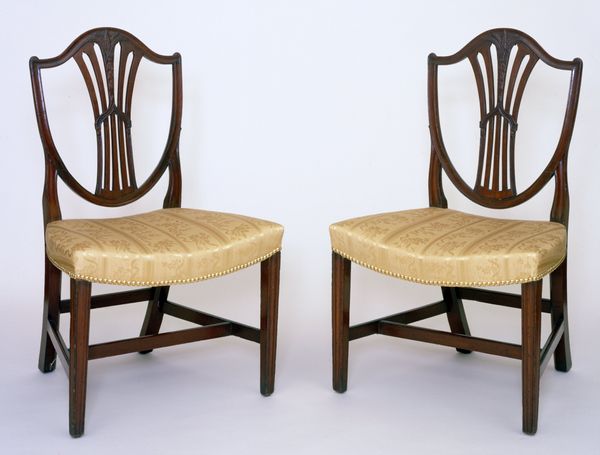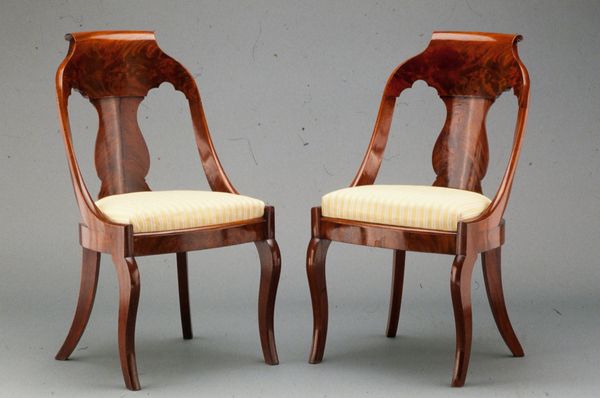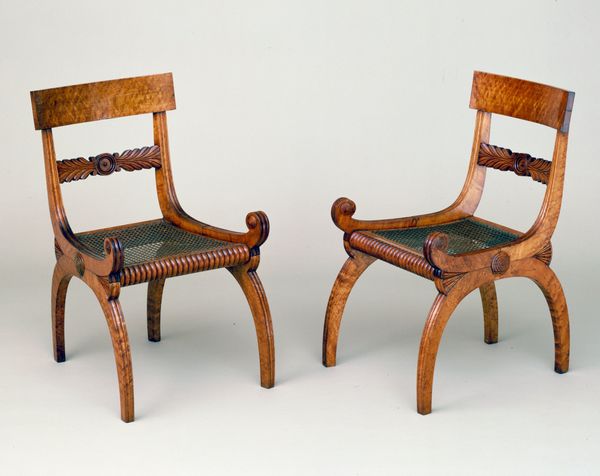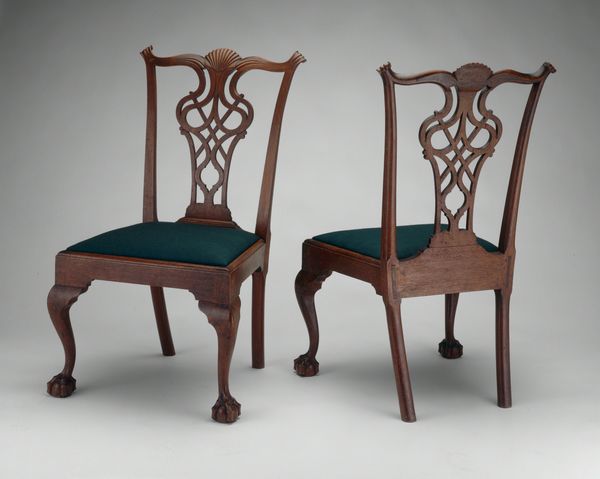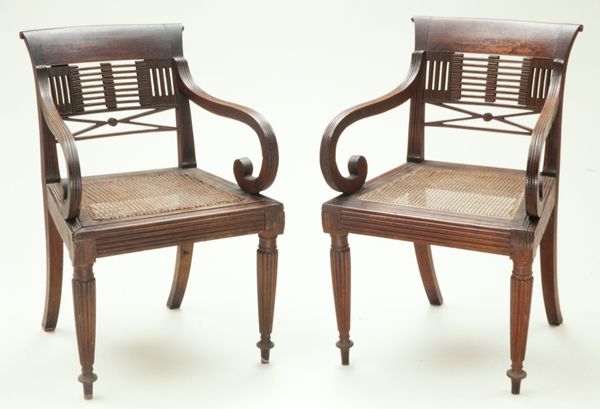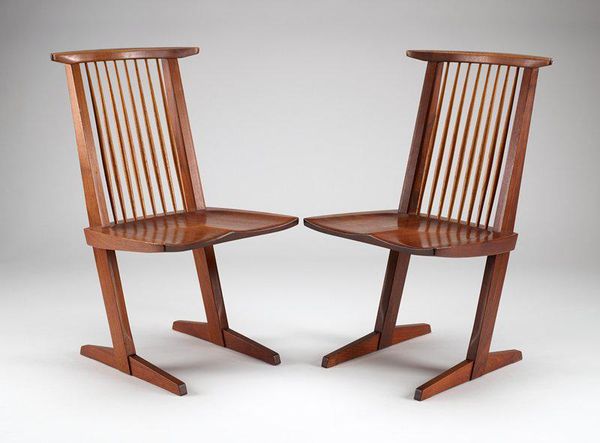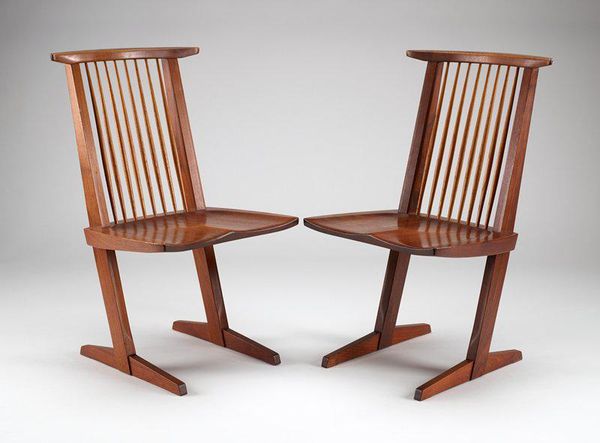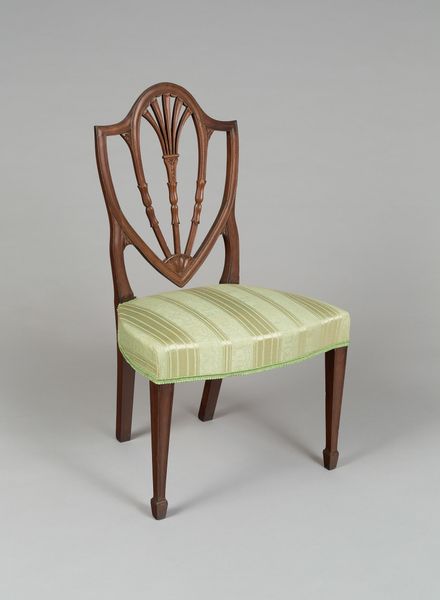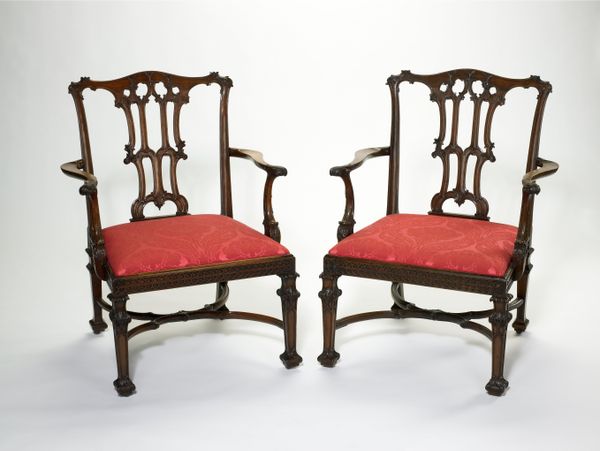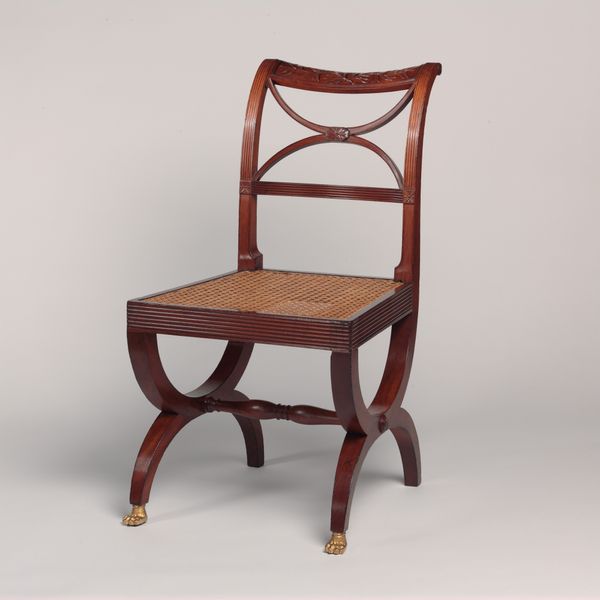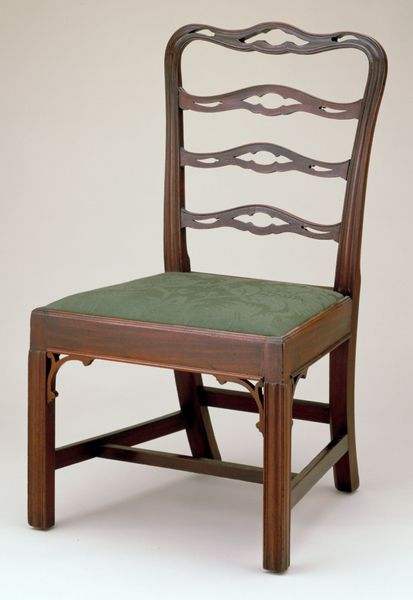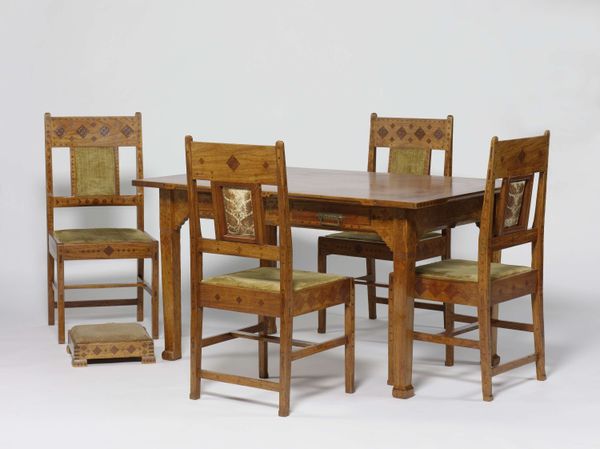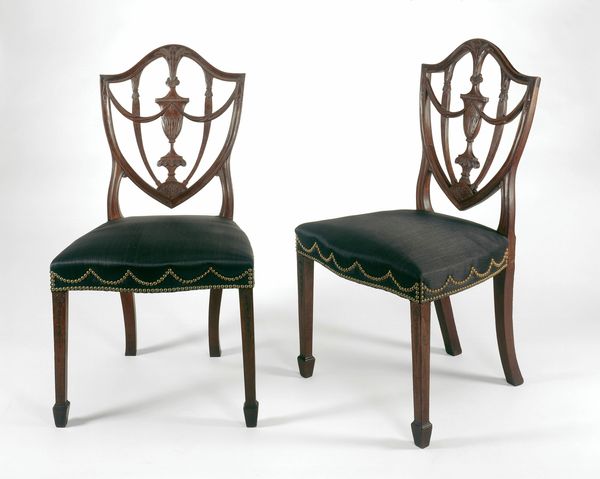
carving, wood
#
neoclacissism
#
carving
#
furniture
#
wood
Dimensions: 37 1/2 x 23 x 19in. (95.2 x 58.4 x 48.3cm)
Copyright: Public Domain
Curator: These Hepplewhite side chairs, crafted around 1795 by Stephen Badlam, strike me with their blend of formality and delicate elegance. What’s your first impression? Editor: They have such restraint. The chairs feel rather muted; the composition creates an air of quiet gentility and polite social exchange, perfect for teatime in a stately home. Curator: I'd say that resonates perfectly with the neoclassical aesthetic. Notice the carved wood of the chair back: the shield shape and vertical lines evidence a pursuit of symmetry and balance. The carving itself, isn’t it remarkable? Editor: Absolutely. It tells a story about craftsmanship, patronage and societal expectations. Wealthy families would acquire such pieces not just for utility, but also for signalling taste and refinement. The furniture was meant to imply respectability and the fulfillment of societal obligations and codes. Curator: Good point. Consider too the materiality: wood is at once organic and capable of sharp lines and abstract geometries, perfectly reflecting how 18th-century artistic aims worked alongside nature. And did you know they’re currently held at the Minneapolis Institute of Art? Editor: How might these chairs have been viewed or engaged with when acquired by a museum versus being used daily in their original setting? Think about the labor involved to create and upkeep something like this: each careful carve and stitch represents countless hours that had an enormous impact on socio-economic considerations, the home economy, and public social rituals. Curator: Yes, thinking beyond pure aesthetics gives a wider impression of 18th-century cultural life. By concentrating on the internal relationships within their carved geometry, we appreciate form meeting content, revealing wider narratives of its origins. Editor: Precisely. Appreciating it on the structural level you suggest highlights the intersection of design, technique, and social ambition – making the viewing experience more fruitful and culturally attentive. Curator: It’s true. This dialogue reinforces the merit of combining methods; only then are artworks truly illuminated. Editor: Agreed. Both perspectives add depth and encourage us to ask the right questions for this stunningly understated set of chairs.
Comments
minneapolisinstituteofart almost 2 years ago
⋮
Stephen Badlam was a leading American furniture maker during the Federal period. He set up his shop in Dorchester Lower Mills, Massachusetts, and was one of a number of furniture makers to mark his furniture with a stamp. Badlam and many of his peers drew inspiration from British design source books such as George Hepplewhite's Cabinet-Maker and Upholsterer's Guide (1788). This chair is one of a pair; the other is currently on view nearby in the MacFarlane Room.
Join the conversation
Join millions of artists and users on Artera today and experience the ultimate creative platform.
